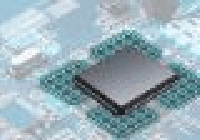SEMICONDUCTOR DESIGN SERVICES
Empowering innovation through cutting-edge semiconductor solutions.
Transform your semiconductor projects with our industry-leading services, including state-of-the-art SoC Design services, ASIC Design services, and VLSI Design services. Our expert team leverages the latest technologies and innovative strategies to take your concepts to a new level of excellence, ensuring efficient, reliable, and highly integrated semiconductor solutions that meet the demands of today's dynamic markets.
Do it right with Ignitarium.
Architecture Consulting
We understand that market differentiation of a new product is attained not merely by targeting power, performance, area and cost goals but by addressing deeper nuances like security and safety requirements.
From Hardware / Software partitioning of a system to Math / DSP intensive designs, from IP-based to all-scratch ASICs, our architects have delivered numerous production-proven architectural specifications.

Development of a LiDAR- based SoC

Development of an Automotive SoC
Digital Design and Verification
A designer knows he has achieved perfection not when there is nothing left to add but when there is nothing left to take away. At Ignitarium, we strive for minimalism-driven designs, squeezing every ounce of performance while staying within the optimal area and power envelope.
These designs are then put through the proverbial wringer by our verification teams, who are armed with system level understanding, advanced verification methodologies and most importantly, rigor and attention to detail.

Lithium Ion Battery Charger Mixed Signal Verification

IoT Gateway Device IC Verification
FPGA Design and Emulation
FPGA Design and Emulation
FPGAs are truly the wild card in the hardware engineer’s design pack. Ignitarium has used FPGAs to enable compute intensive low volume system realizations and to create quick prototypes.
We have worked on emulation of complex Multimedia SoCs partitioned across multiple FPGAs. Armed with alliance partnerships of Xilinx and Intel-Altera, we are today a key partner for many a system company in their FPGA based product deployments.

FPGA Emulation for ARM Based Processor

FPGA Emulation of a Quad Core...
DFT
Offering top-quality and highly-efficient DFT process and methodology with in-depth experience in all EDA tools to enable a design with the highest coverage and lowest test times.
Physical Design
Ownership mode Physical Design from RTL to Power, Performance and Area optimized GDS. Expertise in FinFET-based nanometer-scale technology nodes and industry leading tool flows to bring precision and predictability to your complex physical implementation requirements.
IgniteIC®
IgniteIC® is a proprietary design and verification methodology that enables a jump start to SoC design and leverages ISO-compliant development process for first-pass silicon success.
FAQs?
The main difference between ASIC (Application-Specific Integrated Circuit) design services and SoC (System-on-Chip) design services lies in their architectures and scope:
ASIC design services:
- Customization: ASICs are tailored for a specific application or task. The architecture is highly customized to meet the precise requirements of the intended function, often involving specialized circuits optimized for performance and efficiency.
- Dedication: ASICs are designed for a singular purpose, excluding unnecessary components. This dedication to a specific task result in high performance and energy efficiency but limits the chip’s versatility.
- Optimization: ASICs prioritize optimization for the targeted application. The design process involves maximizing performance and minimizing power consumption by eliminating non-essential features.
SoC design services:
- Integration: SoCs integrate multiple components and functionalities onto a single chip. This includes processors, memory, input/output interfaces, and potentially programmable components. The architecture is more complex to accommodate diverse functions.
- Versatility: SoCs are designed to be versatile and applicable to a range of tasks. They can be used in various applications, from consumer electronics like smartphones to embedded systems and IoT devices.
- Complexity: SoCs are inherently more complex due to the integration of diverse components. The architecture must support the coexistence of different functionalities, leading to a more intricate design process.
- Flexibility: SoCs offer greater flexibility as they can be reprogrammed or configured for different tasks. This flexibility comes at the cost of potentially higher power consumption and a larger footprint compared to dedicated ASICs.
In summary, ASIC design services involves creating custom chips optimized for specific applications, resulting in high performance and efficiency. On the other hand, SoC design services focuses on integrating multiple functions onto a single chip to achieve versatility across a broader range of applications, making the architecture more complex and flexible. The choice between ASIC and SoC depends on the specific requirements of the intended use case.
Semiconductor design services encompass a comprehensive range of offerings aimed at facilitating the creation and development of semiconductor devices. These services play a crucial role in transforming conceptual ideas into tangible and functional integrated circuits. Explore the key components that semiconductor design services include:
- Custom IC Design: Semiconductor design services begin with custom IC (Integrated Circuit) design. This involves creating specialized circuits tailored to meet specific application requirements. Designers optimize performance, power efficiency, and functionality during this phase.
- ASIC Design: Application-Specific Integrated Circuit (ASIC) design is a significant aspect of semiconductor design services. It involves developing chips that are purpose-built for particular applications. ASIC design ensures optimal performance by customizing the architecture to fulfill specific tasks.
- SoC Design: System-on-Chip (SoC) design services focus on integrating multiple components onto a single chip. This approach enhances efficiency by consolidating diverse functionalities such as processors, memory, and peripherals into a unified architecture.
- RTL (Register Transfer Level) Design: Semiconductor design services include RTL design, where engineers work at the register transfer level to create a hardware description of the digital circuit. This serves as a crucial step before moving on to the physical design phase.
- Physical Design and Layout: The physical design phase involves translating the logical design into an actual physical layout. Semiconductor design services include expertise in floor planning, placement, routing, and optimization to ensure manufacturability and performance.
- Verification and Validation: Rigorous verification and validation processes are integral to semiconductor design services. This involves thorough testing and simulation to ensure that the designed circuits meet specifications and perform reliably under various conditions.
- Analog/Mixed-Signal Design: For applications involving both analog and digital signals, semiconductor design services include expertise in analog/mixed-signal design. This ensures seamless integration of different signal types within the semiconductor device.
- FPGA (Field-Programmable Gate Array) Design: FPGA design services involve creating circuits that can be reprogrammed after manufacturing. This flexibility is valuable for prototyping and applications where adaptability is crucial.
- Technology Migration and Upgrades: Semiconductor design services often include support for technology migration and upgrades, allowing existing designs to benefit from advancements in semiconductor manufacturing processes.
- Design for Testability (DFT): DFT techniques are employed to enhance the ease of testing during manufacturing. Engineers design the semiconductor device with built-in test structures to identify and isolate faults quickly.
Choosing reliable semiconductor design services is pivotal for achieving successful outcomes in the competitive semiconductor industry. These services provide the expertise and resources necessary to navigate the complexities of designing cutting-edge semiconductor devices.
Yes, Ignitarium can handle turnkey semiconductor design services encompass a comprehensive and end-to-end solution for businesses seeking to develop custom semiconductor devices. These services are designed to manage the entire semiconductor design process, from conceptualization to the delivery of a fully functional integrated circuit.
By opting for turnkey semiconductor design services, businesses can streamline the complex process of semiconductor development. These services provide a one-stop solution, ensuring that clients receive a fully realized and manufacturable semiconductor solution tailored to their specific needs.
Semiconductor design, also known as VLSI (Very Large-Scale Integration) design, is a complex process involving several stages. Each stage contributes to the creation of intricate integrated circuits that power a myriad of electronic devices.
1. Conceptualization and Specification: The semiconductor design process begins with conceptualization and defining specifications. Engineers work closely with clients to understand the application requirements, performance expectations, and functionalities desired in the semiconductor device.
2. Architectural Design: In the architectural design stage of VLSI design, engineers create a high-level blueprint of the semiconductor device. This involves defining the overall structure, functionality, and interconnections between different components.
3. RTL Design: Register Transfer Level (RTL) design is a crucial phase in semiconductor design. Engineers create a hardware description at the register transfer level, specifying the digital circuit’s behavior and data flow.
4. Functional Verification: Functional verification ensures that the RTL design meets the specified requirements. This stage involves rigorous testing and simulation to identify and rectify any design flaws or discrepancies.
5. Logic Synthesis: Logic synthesis involves converting the RTL description into a netlist, which is a detailed representation of the circuit’s logical components. This stage optimizes the design for factors like performance, power consumption, and area.
6. Physical Design: Physical design encompasses tasks such as floor planning, placement, routing, and optimization. It transforms the logical design into an actual physical layout, considering factors like signal integrity, power distribution, and manufacturability.
7. Timing Analysis: Timing analysis ensures that signals in the semiconductor device meet the required timing constraints. This involves assessing delays and optimizing the design to achieve the desired performance.
8. Design for Testability (DFT): DFT techniques are employed to enhance the ease of testing during manufacturing. Engineers design the semiconductor device with built-in test structures to identify and isolate faults quickly.
9. Verification and Simulation: The design undergoes thorough verification and simulation to confirm its correctness, functionality, and adherence to specifications. This stage ensures the semiconductor device performs as intended under various conditions.
10. Prototyping and FPGA Implementation: Prototyping involves creating a physical prototype of the semiconductor device for testing purposes. FPGA (Field-Programmable Gate Array) implementation may also be utilized for rapid prototyping and validation.
By navigating through these stages of semiconductor design or VLSI design, engineers can create sophisticated integrated circuits that power the advanced electronic systems prevalent in today’s technology landscape.
Yes, Ignitarium can handle all the above stages.
In VLSI (Very Large Scale Integration) design services, the design process is typically divided into two main phases: front-end design and back-end design. These phases involve distinct tasks and responsibilities, contributing to the overall creation of integrated circuits.
Front-End Design:
1. Specification and High-Level Design: Front-end design starts with understanding the client’s requirements and creating a high-level design specification. Engineers collaborate to define the overall architecture, functionality, and key components of the integrated circuit.
2. RTL Design: Register Transfer Level (RTL) design is a crucial front-end task. Engineers create a hardware description at the RTL, specifying the digital circuit’s behavior and data flow. This forms the foundation for subsequent stages.
3. Functional Verification: Functional verification in the front-end ensures that the RTL design meets the specified requirements. Engineers conduct thorough testing and simulation to identify and rectify any design flaws or discrepancies before moving forward.
4. Logic Synthesis: Logic synthesis transforms the RTL description into a netlist, optimizing the design for factors such as performance, power consumption, and area. This stage focuses on refining the logical structure of the design.
5. High-Level Testing: High-level testing in the front-end involves validating the overall functionality of the design. It ensures that the initial specifications are met and that the circuit operates as intended at a conceptual level.
Back-End Design:
1. Physical Design: Back-end design deals with the physical implementation of the circuit. Tasks such as floor planning, placement, and routing are performed to create the actual physical layout of the integrated circuit.
2. Timing Analysis: Timing analysis in the back-end ensures that signals in the design meet the required timing constraints. Engineers assess delays and optimize the physical design to achieve the desired performance.
3. Design for Testability (DFT): DFT techniques are applied in the back-end to enhance the ease of testing during manufacturing. Engineers design the circuit with built-in test structures to identify and isolate faults efficiently.
4. Verification and Simulation: Back-end verification and simulation focus on confirming the correctness of the physical design, including factors like signal integrity, power distribution, and manufacturability.
5. Prototyping and FPGA Implementation: Prototyping and FPGA implementation may be part of the back-end process for rapid testing and validation of the physical design before moving to full-scale manufacturing.
6. Manufacturing and Fabrication: The back-end concludes with the manufacturing phase. Semiconductor fabrication facilities produce the integrated circuits based on the finalized physical design.
By understanding the distinctions between front-end and back-end design in VLSI design services, businesses can effectively navigate the complex process of creating advanced integrated circuits. These specialized services cater to different aspects of the design lifecycle, ensuring a comprehensive and efficient approach to VLSI design.
Yes, Ignitarium can handle both Front-end design and Back-end design in VLSI design services
In the realm of VLSI (Very Large Scale Integration) design services, the terms “back-end design” and “physical design” are often used interchangeably, but they do encompass slightly different aspects within the overall design process. Let’s delve into the relationship between back-end design and physical design in VLSI, incorporating the “VLSI design services” keyword for SEO purposes:
Back-End Design in VLSI:
Back-end design in VLSI refers to the phase of the design process that deals with the implementation and realization of the integrated circuit after the front-end design has been completed. It involves translating the logical design created during the front-end phase into an actual physical layout that can be manufactured. Back-end design encompasses several critical tasks, including:
1. Physical Design: Physical design, which is often considered synonymous with back-end design, involves tasks like floor planning, placement, and routing. Engineers determine the precise placement of components on the chip, optimize routing for signal integrity, and create a layout that adheres to the design specifications.
2. Timing Analysis: Timing analysis is performed during the back-end design to ensure that the signals in the physical layout meet the required timing constraints. Engineers evaluate and optimize the circuit to achieve the desired performance levels.
3. Design for Testability (DFT): Back-end design incorporates DFT techniques to enhance the ease of testing during the manufacturing phase. This involves designing the integrated circuit with built-in test structures to identify and isolate faults efficiently.
4. Verification and Simulation: The back-end verification and simulation processes focus on confirming the correctness of the physical design. This includes assessing factors like signal integrity, power distribution, and manufacturability.
Physical Design in VLSI: Physical design, as mentioned earlier, is a component of back-end design. It specifically emphasizes the layout and geometry of the integrated circuit. The physical design stage includes:
1. Floor Planning: Engineers decide on the overall chip floor plan, determining the placement of functional blocks, power grids, and I/O pads.
2. Placement: During the placement stage, the positions of individual components are determined within the chip area, considering factors such as heat dissipation and signal propagation.
3. Routing: Routing involves establishing the interconnections between the placed components. Engineers optimize the routing to ensure efficient signal paths, avoid congestion, and minimize potential issues.
4. Optimization: The physical design undergoes optimization processes to enhance performance, reduce power consumption, and meet design specifications.
In summary, while back-end design and physical design are closely related, with physical design being a significant aspect of the back-end, back-end design as a broader term includes additional considerations like timing analysis, design for testability, and overall verification. Both terms are vital in the comprehensive process of VLSI design services, ensuring the successful transition from a conceptual design to a physically manufacturable integrated circuit.
In the realm of VLSI (Very Large Scale Integration) design services, the verification stage plays a crucial role in ensuring the correctness and functionality of the designed integrated circuits. The verification stage is primarily associated with the front-end of the VLSI design process. Let’s explore the placement of the verification stage in the context of VLSI design services, incorporating the “VLSI design services” keyword for SEO purposes:
Verification Stage in VLSI Design Services:
1. Front-End Focus: The verification stage is predominantly a front-end design activity. It occurs after the Register Transfer Level (RTL) design phase and involves comprehensive testing and simulation to confirm that the design meets the specified requirements and behaves as intended.
2. Functional Verification: Front-end verification primarily focuses on functional verification. Engineers use testbenches, simulations, and other verification methodologies to validate the logical design, ensuring that the implemented RTL accurately reflects the desired behavior.
3. Bug Identification and Correction: During the verification stage, any discrepancies or bugs in the design are identified and corrected. This iterative process helps refine the design before progressing to subsequent phases, reducing the likelihood of issues being carried forward to the back-end.
4. High-Level Testing: High-level testing is an integral part of front-end verification. It involves assessing the overall functionality of the design based on the initial specifications. Ensuring that the design meets the high-level requirements is crucial before moving on to the physical implementation.
5. RTL Simulation: RTL simulation is a key aspect of front-end verification, where engineers simulate the behavior of the digital circuit at the register transfer level. This simulation helps detect and rectify logical errors in the design.
While the verification stage primarily falls within the front-end of VLSI design services, it’s essential to note that verification activities continue to some extent throughout the entire design process. Back-end verification steps may include ensuring the correctness of the physical layout, addressing timing issues, and validating the final implementation.
In summary, the verification stage is a critical component of VLSI design services, with a primary focus on the front-end. It ensures the functional accuracy of the logical design before transitioning to the physical implementation stages, contributing to the overall success of the VLSI design process.
Yes, Ignitarium has an expert Verification services team and has a proven track record of delivering successfully for global tier-1 clients.





























